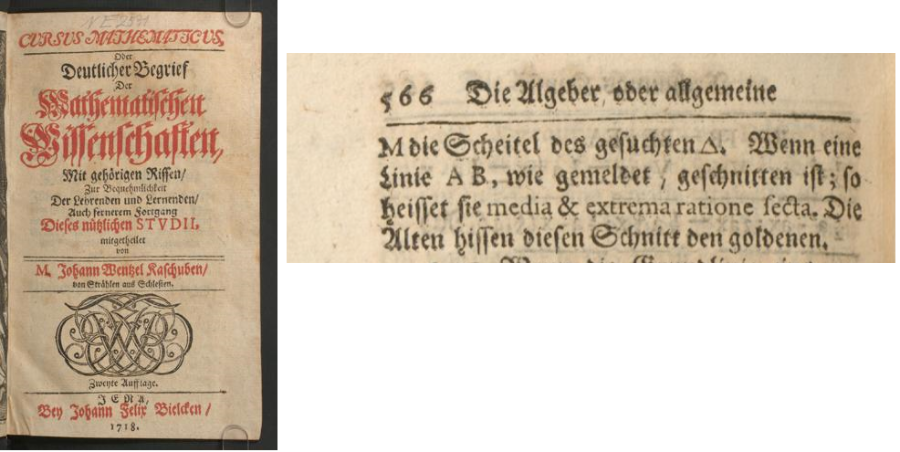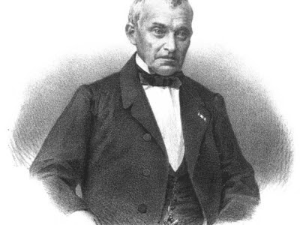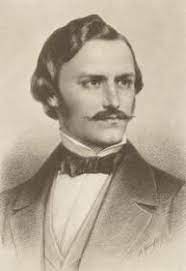
how a construction became an esthetic ideal
Pythagoras - Euclides - Vitruvius - Pacioli - Palladio
In 300 BC Euclides described in his book The Elements a construction in which '[i][i]a segment is devided into an extreme and a median ratio if the ratio of the total length and the greater part is equal to the ratio of the greater part and the smaller part.[/i][/i]'[br]This, not more and no less was the status of what what we know as the golden sextion: '[i][b]the division into extreme and median ratio[/b][/i]', as well in Greek Antiquity as in many centuries to follow.[br]The construction was known in Greek and Roman Antiquity and in Renaissance, but never played a role in art. Pythagoras, Vitruvius, Pacioli, Alberti and Palladio, for all of them proportion between integers formed the base in their tractates.[br]In 1564 the German mathematician Simon Jacob wrote that the quotiënt two consecutive Fibonacci numbers converge to the number [math]\Phi[/math]. This finding was rediscovered in 1608 by Johannes Kepler, but after all the [math]\Phi[/math]-interest was lilited to its mathematical properties.
1717 - Johann Wenceslaus Kaschube
The olderst known source that uses the name 'golden section' is the bok '[i]CURSUS MATHEMATICUS Oder Deutlicher Begrief Der Mathematischen Wissenschaften' ([/i]1717 by Johann Wenceslaus Kaschube). [br]You can find it online at the site of the [url=https://www.e-rara.ch/zuz/doi/10.3931/e-rara-51190]Central library of Zürich[/url].[br]In his descriptions of mean proportionals and constructions Kaschube writes [url=https://www.e-rara.ch/zuz/content/zoom/14071922]pag. 566[/url]: [br]".[i].. Wenn eine Linie AB wie gemeldet geschnitten ist so heissest sie media & extrema ratione fecta. [br]Die Alten hissen diesen Schnitt den goldenen,[/i]"[br]"[i]When a line AB is cut as described, it is called media & extrema ratione fecta. [br]The Old called this section the golden[/i]." Kaschube doesn't elaborate further on the name, nor on the appearance of this proportion in man, nature or art.

Martin Ohm - Adolf Zeising
[b]1835[/b]: Enter Martin Ohm, the jounger brother of the fysician Georg Ohm.[br]In his book '[i]Die reine Elementar Mathematik[/i]' he calls Euclides' division into extreme and mean ratio "goldener Schnitt" (golden section) and picks up again the name Kaschube used some 120 jaar earlier. Indirectly the name ends up by a man Adolf Zeising, who studied literature ad philosophy and published about most diverse subjects.

[b]1854[/b]: Enter Adolf Zeising [br]Hij publishes a book with the resounding title: "[i]Neue lehre von den proportionen des menschlichen körpers, aus einem bisher unerkannt gebliebenen, die ganze natur und kunst durchdringenden morphologischen grundgesetze entwickelt und mit einer volständigen historischen uebersicht der bisherigen systeme begleitet[/i]". [br]Translated: "[i]New doctrine on the proportions of the human body, developed from a porphological basic law unknown unto now that penetrates the proportions of the whole nature and art[/i]."[br]Zeising tries to prove and illustrate his bombastic claims in all its details.[br]This book marks the real start of the big story of the golden section and all its claims.[br]We learned to look though glasses of the golden section and don't see fractions of [math]\frac{3}{5}[/math] or [math]\frac{5}{8}[/math], but proportions of 'approximately' [math]\frac{\sqrt{5}-1}{2}[/math]. You can find Zeisings book [url=https://archive.org/details/neuelehrevondenp00zeis]here[/url] online.

the status of the GS
The [i]division in extreme and mean reason[/i] was already known in Antiquity, Paccioli wrote a book on it, but only halfway 19th century is was proclaimed as an esthetic ideal and retroactively thrown back into history.[br]In the last chapter of his doctoral script Albert van der Schoot writes that te GR of Paccioli is another GR than the one of Zeisling.[br][br][size=150]Paccioli[/size][br]Paccioli still stands in the Pythagorean tradition of ratios of integers. These proportions are the standard in human body and are applied in architecture. Irrationale numbers can be approximated but never be known, as isn't God. "[i]The artist has to follow nature with the means he gets to know and understand nature[/i]" The irrational doesn't belong to it. The evident consequence of it is that GR hasn't got a place in architecture and art, nor as in Greek Antiquity.[br][br][size=150]Zeising[/size][br]Zeising lives in another era. In philosophy of early 19th century there's a rise of a German Idealism. [br]van der Schoot writes that the projection on Greek Antiquity is connected with the Paradise Lost syndrom of the Romantic era. Divers principles converge:[br][list][*]the classic point of view of Vitruvius that the shape of the human body van be determined by the correct proportion of whole and detail[/*][*]the attractive romantic idea that harmony can manifest itself as unity in diversity,[br]wether in the human body, the art or nature[/*][*]the urge for quantitative measurability and scientific practice at the same time. [/*][/list]Si an irrational expression as [math]\frac{\sqrt{5}-1}{1}[/math], a romantic ideal and the empiric result of Fechner's tests perfectly match together. In one effort Pythagoras, Paccioli and da Vinci are put into it as well without dwelling on their real ideas.[br][br][b][i]"The GR that's put on the scene is by far not anymore the division in extreme and mean reason. That's just a formal platform for an idea to make the world of today, but mainly of the renaissance just a bit mor beautiful and harmonic than it was already without such a proportion.[br]Unto our time the GR has remained a romantic idea that's not derived from, but is attributed to domains and eras suited for such an ideal.[br]That precisely this proportion was deified, long before connecting it with creativity is not a random choice. Thanks to its specific mathematical properties no other proportion can compete with the GR to fulfill the longing for harmony and integration of fragments with each other and the whole."[/i][/b] (Albert van der Schoot)[br]